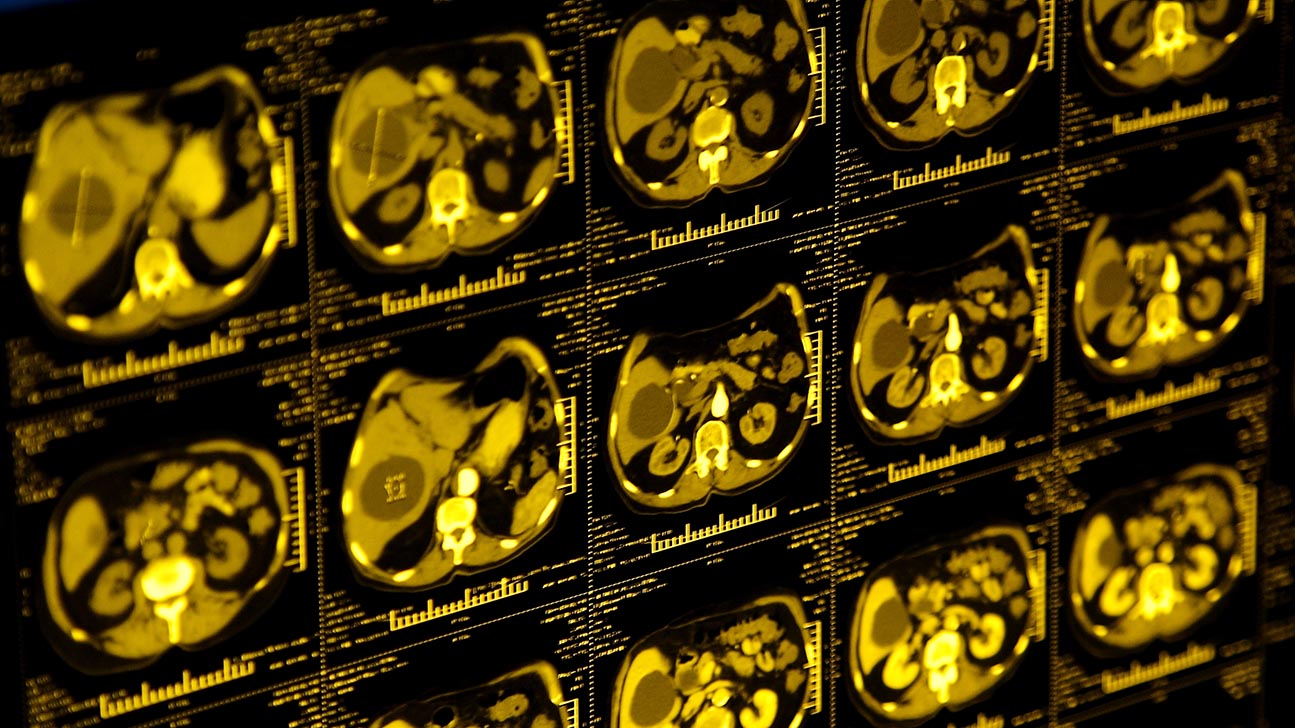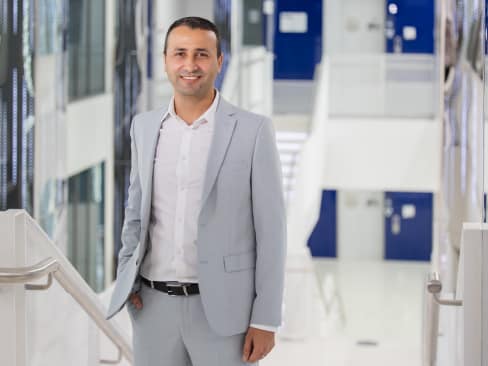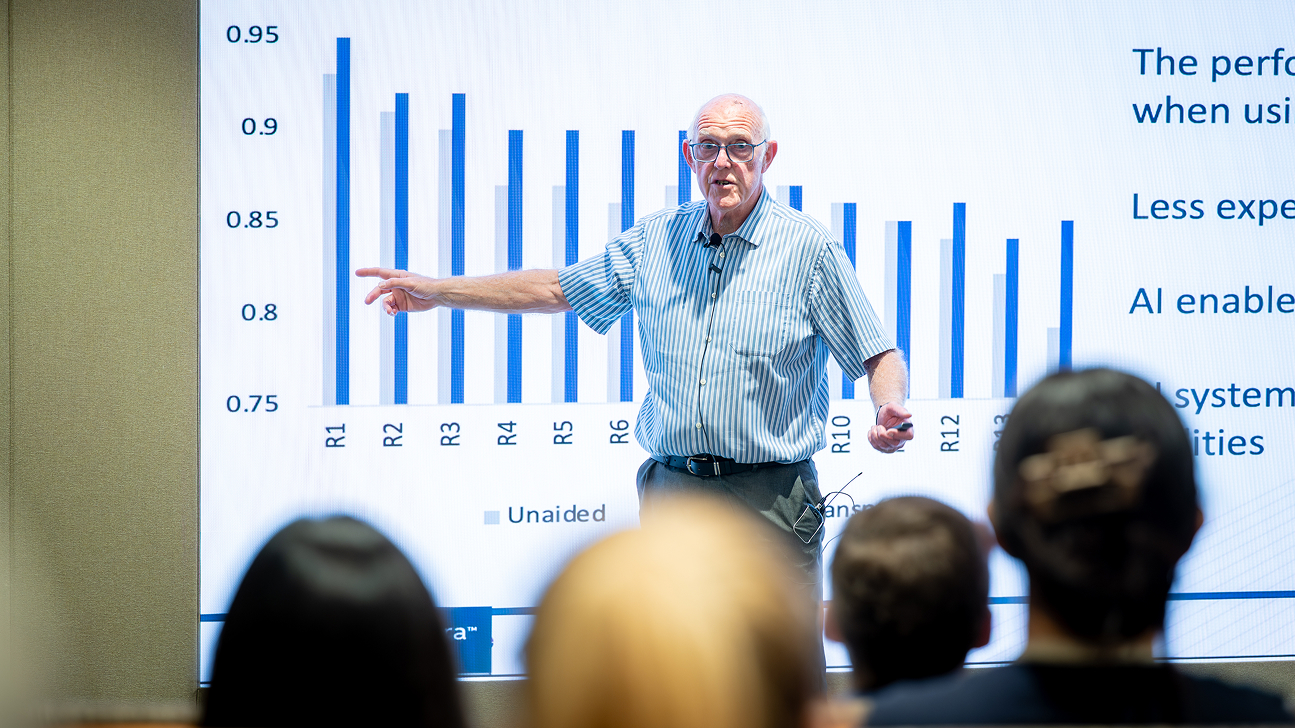Improving diagnoses of a dangerous condition
Friday, December 15, 2023

Pulmonary embolism is a sudden blood clot in the lungs that kills hundreds of thousands of people throughout the world each year. If caught quickly, the condition can be treated, saving a patient’s life. But diagnosis is difficult, and approximately one quarter of cases are initially misdiagnosed.
Mohammad Yaqub, associate professor of computer vision at MBZUAI, and other researchers at MBZUAI and Sheikh Shakbout Medical City in Abu Dhabi, are developing a new method to identify pulmonary embolism. The approach uses deep learning neural networks and has the potential to help doctors diagnose patients with this dangerous condition. The research was recently presented at the International Conference on Medical Image Computing and Computer Assisted Intervention, held in Vancouver.
To determine if a patient has a pulmonary embolism today, the patient’s lungs are imaged with a technology known as computed tomography. These CT scans are not just one image; they can consist of hundreds of individual images, known as slices, that show the state of the lungs at different depths in the tissue.
For a trained physician, it can take up to 10 minutes to review a CT scan — a lot of time in an emergency department where time is extremely valuable. “There are almost a million pulmonary embolism patients every year in the U.S.,” Yaqub said. “But this is a small number when it is compared to the tens of millions of people who show up at emergency rooms with chest pain and need to be examined for PE.”
Yaqub and his team believe that artificial intelligence has the capability to quickly identify patients who are experiencing pulmonary embolism and those who are not, potentially increasing accuracy and helping physicians use their time more effectively.

Dr. Mohammad Yaqub
Their work builds on previous research that combined machine analysis of CT scans with data from patients’ electronic health records. This approach, which is known as multimodal fusion, combines different kinds of information, in this case, images and text. While multimodal analysis is powerful, it can be difficult to implement, as the artificial intelligence application needs to be able to make sense of these different kinds of information.
Yaqub and his team call their innovation pulmonary embolism detection using contrastive learning, or PECon. Their method relies on neural networks to encode the data from the images and electronic health records into a similar format that can be compared by the system. This information is then aligned according to each patient, creating a profile that more accurately identifies pulmonary embolism than one kind of data alone.
Their approach is contrastive in that the system creates associations between similar kinds of data and separates data that is dissimilar. “We are now in the deep learning era and use these approaches that look at data and can figure out what are the patterns within the normal data and abnormal data and learn what distinguishes them from each other,” Yaqub said.
Though early, their approach has generated impressive results.
In a traditional medical setting, with CT scans and other information at their disposal, doctors can correctly diagnose patients approximately 90% of the time. PECon was shown to have a very similar performance. “But the difference here is that instead of a radiologist looking into the CT scans for between five to 10 minutes, this program can provide results in less than a second when it’s run on a good computer,” Yaqub said.
Dr. Vijay Ram Papineni of Sheikh Shakbout Medical City and Santosh Sanjeev, Salwa K. Al Khatib, Mai A. Shaaban and Ibrahim Almakky of MBZUAI contributed to the study.
Looking ahead, Yaqub said that one of the biggest challenges is developing an application that is able to make accurate predictions with different data sets from different regions. “The data we used was from the U.S., but we want this approach to work on data that is more diverse and gathered in other parts of the world,” Yaqub said.
- research ,
- healthcare ,
- computer vision ,
- conferences ,
- MICCAI ,
Related
Special delivery: a new, realistic measure of vehicle routing algorithms
A new benchmark by researchers at MBZUAI simulates the unpredictable nature of delivery in cities, helping logistics.....
- delivery ,
- benchmark ,
- logistics ,
- neurips ,
- conference ,
- computer vision ,
- research ,
- machine learning ,
Why 3D spatial reasoning still trips up today’s AI systems
A new benchmark by MBZUAI researchers shows how poorly current multimodal methods handle real-world geometric and perspective-based.....
- benchmark ,
- 3D ,
- spatial reasoning ,
- Vision language model ,
- neurips ,
- conference ,
- research ,
Sir Michael Brady on why healthcare AI must move from detection to articulation
Speaking as part of MBZUAI’s Distinguished Lecture series, Sir Michael Brady discussed the future of healthcare and.....
- medicine ,
- healthcare ,
- guest lecture ,
- on campus ,
- oncology ,
- computer vision ,
- causal reasoning ,


